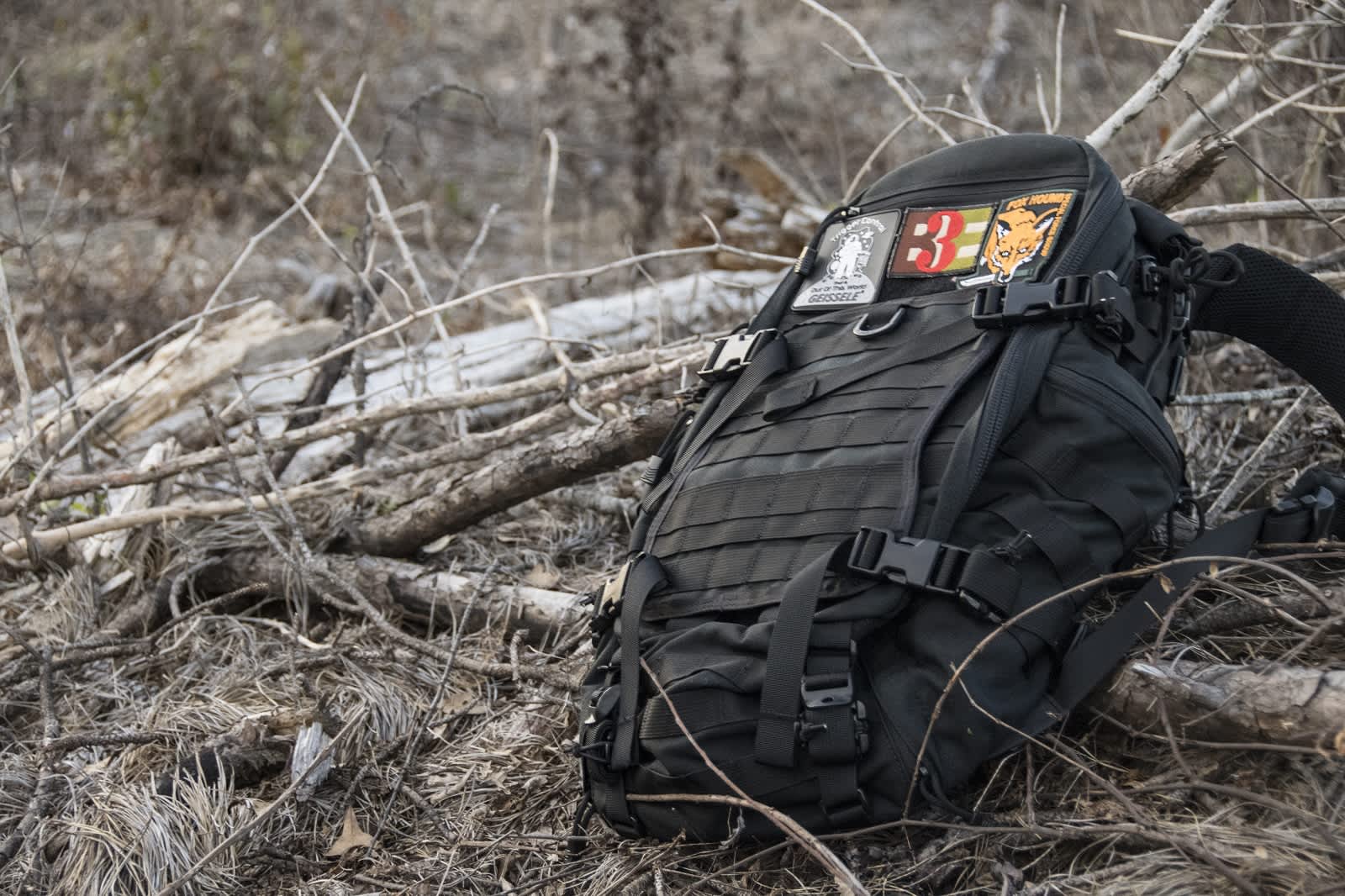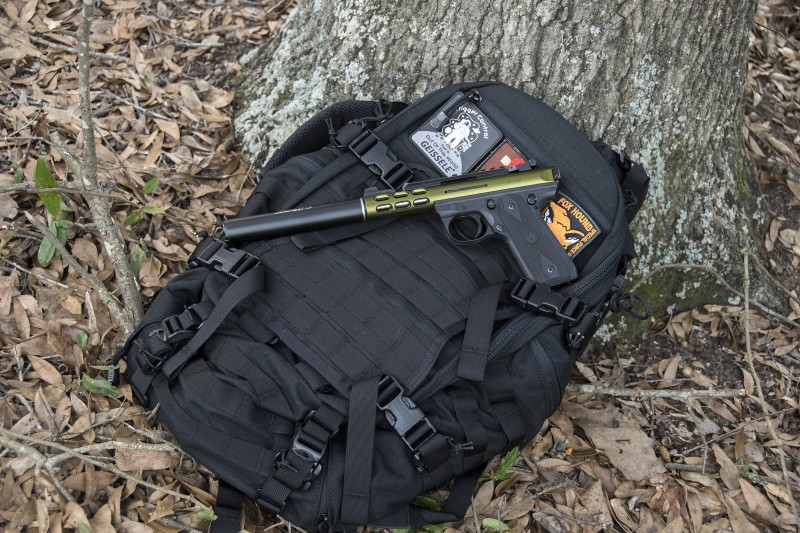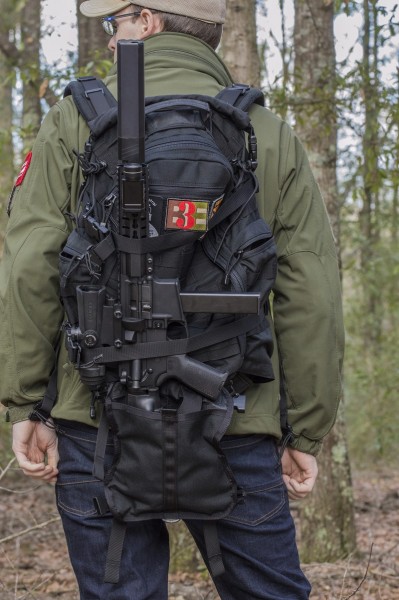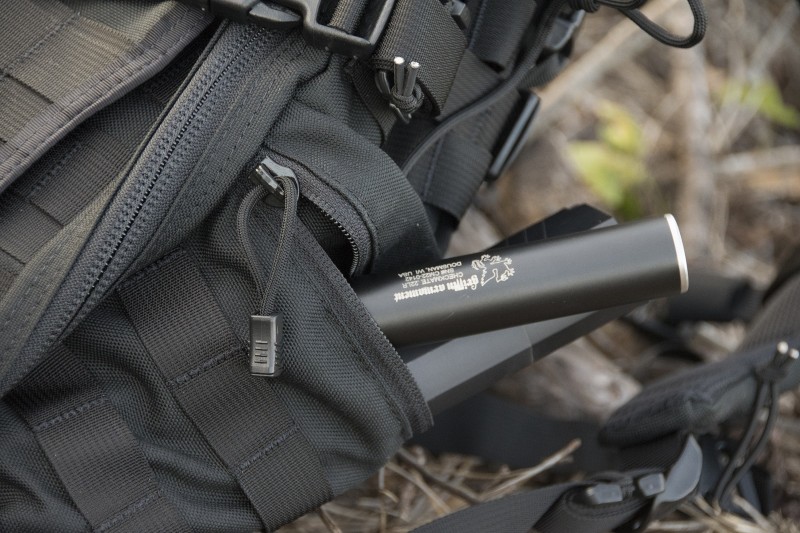Triple Aught Design FAST Pack EDC
Jim Grant 02.09.16

I’m not a “bag” guy.
Until recently, I owned a single rucksack—a new-production, USMC rucksack bought from the PX for me by my brother-in-law. I’ve used this pack to transport food, water supplies, and even 50 fully-loaded G3 magazines. I can appreciate its rugged construction and padded shoulder straps, but my depth of appreciation for fabric containers ends there.
I always feel like a Bud Lite drinker trying to hold a conversation with a sommelier on the finer points of wine pairings whenever a geardo tries to talk with me about rucksacks. So you can imagine my horror when I was tasked with reviewing a pack from high-end outfitter Triple Aught Design.
When my new FAST Pack EDC arrived on the big brown truck, the first thing I noticed was its heft. There’s no mistaking the handsome rucksack for a Chinese-made impersonator. It feels like I could carry lead bullets in the thing.
A cursory glance over the product revealed triple stitching throughout and paracord-secured excess strapping. On the top of the pack’s rear face is a huge velcro rectangle for mounting morale patches, but the rest of the back is practically drowning in two-inch MOLLE straps.
The name of the game with high-end packs and rucksacks is modularity. Obviously quality has to be present, but companies like Triple Aught Design reach the point of diminishing returns on overbuilding their products, so they must innovate. At first glance, the uninformed like myself see a simple, black backpack. It seems a little more tactical than something out of a REI catalog, but otherwise the same.

Once I had a chance to fully utilize the seemingly endless features of the EDC, I started to appreciate everything that went into its design and construction. For example, on long-distance hikes, I don’t like slinging my rifle over my shoulder as my choice tactical slings tend to dig into my flesh after an hour or so. The EDC features a small flap called the transporter tail that alone totally sold me on the pack.
Imagine something like a lobster tail attached to the bottom of the bag that lays across the webbing on the front. When not in use, this little tail is held in place by a pair of straps that keep it flush with the rest of the bag. The combination of these features allows them to function in unison as a rifle scabbard.
The transporter tail supports the buttstock of the rifle while the straps that previously secured the flap prevent it from moving around. It’s an ingenious feature that is totally unobtrusive when not used. This tail can also be used to secure a hydration system like a Camelbak bladder.
More cool additions are the two downward pockets on either side of the transporter tail at the bottom of the bag. At the deepest part of the inside of these pockets is a small D-ring. This is designed to allow the wearer to attach a carabiner and some paracord to either a knife, flashlight, fire starter, or anything else a hiker might need quickly. The location of the pocket allows you to reach the zipper and contents without taking the EDC off your back.

On the other side of these pockets facing skyward is another set of zippered pockets perfectly suited to a standard water bottle, suppressor, or medium-sized flashlight. Continuing up, I noticed a strange rolled portion of the pack that I initially believed was a poncho or weatherized liner to drape over the entire pack.
Upon closer inspection, I realized it’s a separate container designed for sensitive electronics like tablets or laptops. The reinforced material used in its construction is also waterproof, even if the rest of the back is soaked.
To further test out the pack, I took in on a brief five-mile hike with my warbeast chihuahua Peanut and intentionally overpacked to see how it held up. I filled the back with my heavy-duty aluminum laptop, an HK MP5K with five loaded magazines, two Glock 17s with six loaded magazines, an Osprey 45 suppressor, a Ruger MKIII LITE with a Griffin Armaments CheckMate suppressor, and a CMMG PDW9 secured by the transporter tail. I also shoved a bunch of surplus G3 20-round magazines to introduce uncomfortable angles and additional heft.
In total, the pack weighed close to 38 pounds. With a similar loadout, my old USMC pack would have abused my back after walking 100 yards and my laptop would have zero finish left on it after the hike.
In testing, the pack was comfortable and didn’t place any additional strain on my back. The shoulder straps were well-padded, and allowed the pack to sit comfortably high on me, allowing good freedom of movement. The pack stayed fairly slim even when fully loaded, allowing me to navigate the often narrow paths of South Carolina’s swamp lands without worrying about getting snagged.

While hiking with nearly 40 pounds of gear is never as enjoyable as doing so unburdened, the Triple Aught Design pack did a fantastic shop of equally distributing the weight. Other packs I’ve used in the past with a laptop compartment tend to let it slam into the wearer’s back without concern for their comfort. The thick padding on the FAST Pack EDC did wonders for reducing this.
While I still enjoy my old USMC pack, I have to say I would trust my life and supplies to the Fast Pack over it any day. It’s not the cheapest product around at about $340 retail, but for hikers and shooters looking for a diehard rucksack to serve as a multi-day pack or bug-out bag with enough features and attachment points to accommodate everything they need and more, the Fast Pack EDC has no equal.

